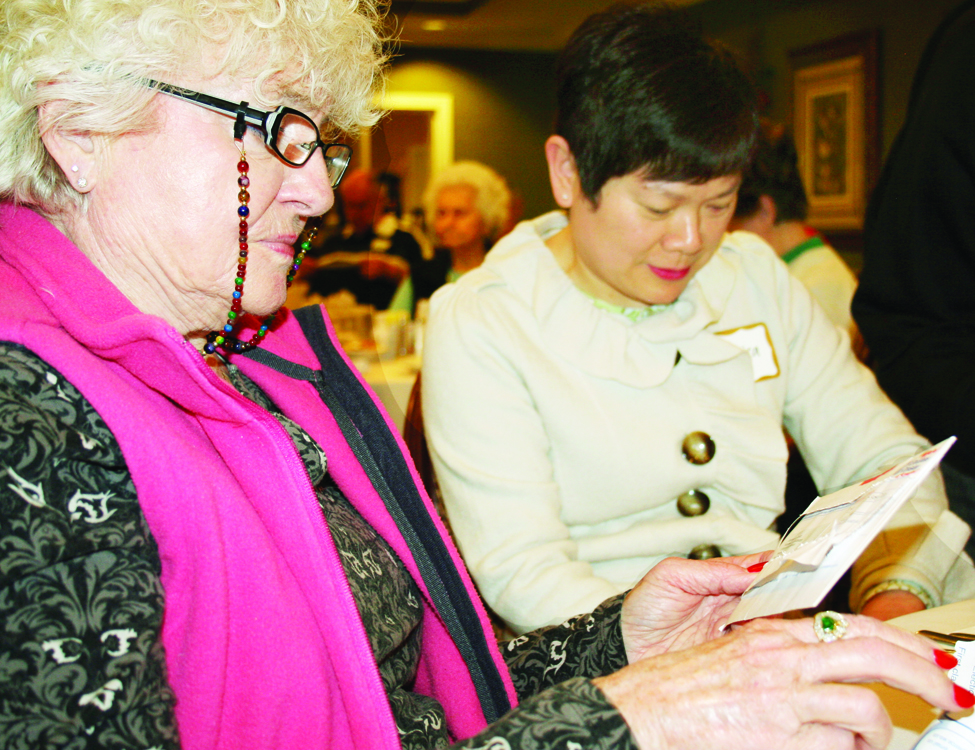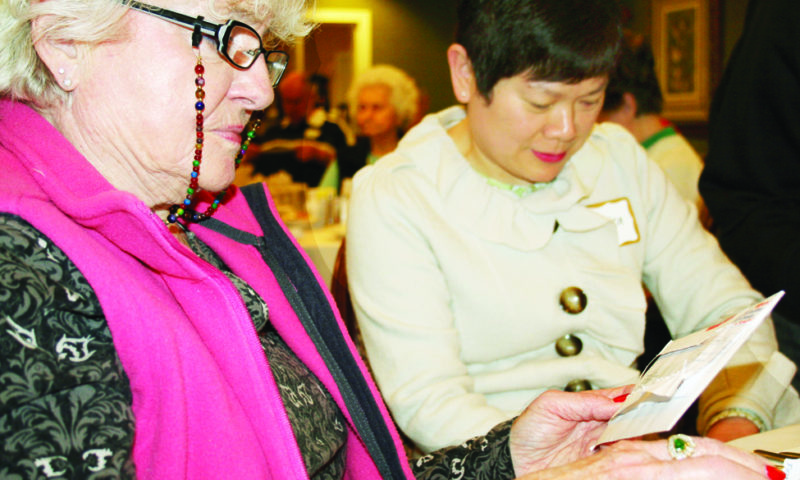Making your vote count
Pierce County Auditor, Julie Anderson, is talking to seniors about voting. Not that seniors have problems voting, seniors vote in droves (at least 79 percent of individuals over 65 in the last election) compared to the rest of the population but there are special considerations for senior voters. So Anderson is going to places seniors live and gather and giving seniors a chance to see the inner workings of the Pierce County Auditor’s Office.
Anderson’s job as auditor involves animal control, elections, public records and licensing, “I do everything but audit.â€Â She likes to tell people she’s the only Pierce County official with a horse trailer. With 507 elected officials in Pierce County and 124 jurisdictions, by far the most scrutinized aspect of her job involves elections. Every piece of equipment has to be certified and certification takes on average two years. “With 39 counties in Washington, there would be 39 different types of elections if we didn’t have standardization,†Anderson tells her audiences. Still, over 170 election laws changed as a result of Washington’s 2004 election for governor.
Every ballot’s signature gets compared to an electronic version of the voter’s signature as the first step to getting counted. If a voter doesn’t sign the ballot, the elections office sends a letter or calls to “cure†the ballot. “That’s why,†said Anderson, “its’ important to give a phone number.â€Â Your voter registration is public information so it isn’t covered by any of the envelopes contained in your voter’s packet but phone numbers and e-mail are not public so they are covered. Medications, disabilities, disease and age can change signatures so they should be updated as needed. Signatures can even be an X but the elections office must have on record that that’s your mark. Computers and trained election staff compare your signature to what’s on file.
When election officials remove your ballot from its outside envelope as the next step, the two holes punched through that envelope help guarantee that nothing remains in that envelope. All the empty envelopes are grouped and threaded with zip ties to ensure that nothing is left behind.
The inside envelope also contains holes but those holes serve to reduce weight so the cost of postage is less.
Once the ballot has been removed, election workers look for stray marks such as circled or multiple selections. If stray marks exist, the ballots are set aside and stamped with a unique seven digit number. A second ballot is pulled that must be the exact blank ballot, (there are 382 precincts and therefore 382 unique types of ballots) and the serial number from the original is written on the new ballot. Two election workers prepare the new ballot, one reading, the second marking and a second team of two will repeat the process all under observation from political party observers. The purpose of all those people is to determine voter intent.
Anderson wants everyone who wants to vote to do so. One way to make that possible is through the use of voting centers. There are five voting centers open the day prior to Election Day and Election Day. Voting centers provide voters with assistive devices such as touch screens, audio ballot or other assistance. “You get to decide how much assistance you want. You’re in the driver’s seat,†said Anderson.
Anderson said that spouses and family members will sometimes get frustrated that voter information continues to come to someone with a degenerative disease that makes voting difficult or unlikely. The only way to get off the voter role is by request from the voter or a declaration from a judge that the voter is not competent. It’s against the law to fill out the ballot for someone else even with a power of attorney.



